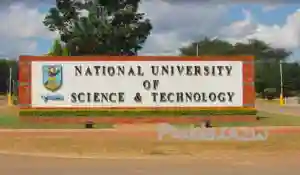The National University of Science and Technology (NUST) has offered free deoxyribonucleic acid (DNA) tests for the pregnant nine-year-old Tsholotsho girl and her baby once she delivers.
The director of NUST’ Applied Genetic Testing Centre, Zephania Dlamini said it was part of their mandate to assist communities that were facing such crises. He told The Sunday News:
As a centre of excellence in DNA testing in Zimbabwe, we do have a responsibility to help the community that we are working in. We would be glad to help law enforcement agents to solve this case.
We will do this DNA testing as soon as the child is born, we will liaise with doctors so that we get the DNA samples from the suspect, the nine-year-old and the offspring that she is going to give birth to.
We will gladly conduct the DNA test as our contribution to society without charging them.
He said since the matter was before the courts, they were waiting for the court to decide whether a DNA test was required, adding that the results would be given to the court officials. Said Dlamini:
All life forms have genetic materials in the form of DNA. This DNA is inherited by individuals from their parents and human beings and animals usually have two pairs of chromosomes, half a pair comes from the mother and the other half from the father.
With that basically, there are no two individuals that have the same DNA except identical twins who have exactly the same DNA.
With the Tsholotsho case where we hear a nine-year-old is pregnant and the suspect is the father of this child, it is possible to distinguish the DNA of this man in this child who is supposed to be his grandchild and is now allegedly going to be the father.
You must recognise that he gave her only half and the other half is from the mother. So, there are some markers that are found within the father that will also be found in the nine-year-old.
The child to be born will have DNA markers that will be clear from the mother, we will analyse that DNA and then analyse from the suspected father and it will be possible to tell if he is indeed the perpetrator of the rape.
He can be excluded if we do not find his DNA in the child to be born. The importance of this is that we have to test the mother, new-born and the alleged perpetrator and it must match 100 percent with the suspect. It’s a simple case.
Dlamini explained that not being the father of the to-be-born child would not necessarily exonerate him from having raped her. He said:
If a person is charged with rape we do the tests and if they come out negative with no DNA match (with the newly born child), it does not mean they did not rape.
It may mean they did not impregnate the victim, but it does not necessarily provide evidence that they did not rape.
DNA cannot prove in that case, it can only exonerate one from being the father but not the rape case.
That one will remain the victim’s word against the perpetrator.

